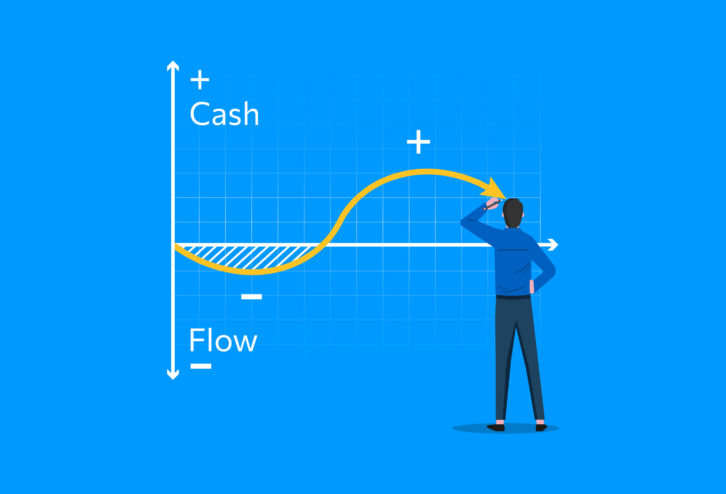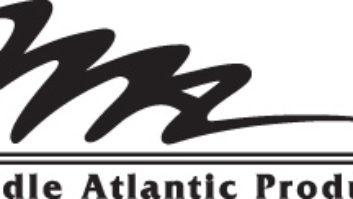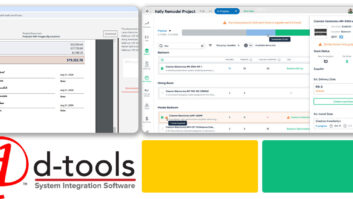[DITOR’S NOTE: VITAL is in its second year of monthly CI Business Mastery Classes where it addresses important CI business topics via webinars. Each class is supported by an industry brand. VITAL has agreed to share some of the information from these classes in a monthly column of highlights from its most recent webinar. The topics are the same as the previous year’s classes, but the content is refreshed. This CI Business Mastery Class was on the customer deposits and inventory, and it was supported by DMF Lighting.]

Cash flow is king, and yet cash flow can be the most difficult thing to understand and manage in a business. Customer deposits and inventory are the frequently overlooked components of cash flow (which also includes accounts receivable). Today we’ll talk about what’s unique about cash flow in our industry and how we have a massive advantage over other industries, and then we’re going to introduce some cash flow optimization techniques.
The CI business is a great one for many reasons. We have the most fun and we get to play with the coolest stuff. A couple of other advantages our business has relates to the cash flow of our projects. It’s customary for our clients to pay us substantial amounts of money in advance of a project to procure equipment, build racks, complete our designs, and prepare our team. Under normal supply chain circumstances, our inventory is typically able to be purchased just-in-time. We don’t have the burden of stocking our shelves with items we hope people will buy. All of these are significant advantages.
In theory, our business model is cash rich. Many of our vendors provide terms on their goods and inventory, and labor is often prepaid by our clients. We should have the best cash conversion cycle of any industry, and many well-run integrators do take advantage of these cycles, while others don’t know where their cash is invested and have no clarity there. After this article, you’ll have a better idea how to gain that level of visibility.
Revenue Recognition Models
The best way to always know your cash position and have accurate accounting of revenues and profits is to treat the asking for cash separate from recognizing revenue for products and labor delivered. We have identified five revenue recognition models used throughout the industry:
- Cash Received or Requested = Revenue: When customers give you money. The limitation here is that we end up recognizing revenue well in advance of any costs.
- Job Completion = Revenue: Many dealers understand that customer deposits are not revenue. The limitation here is we end up recognizing revenue after most of the costs are incurred.
- Goods Received = Revenue: These dealers will hold on to customer deposit money and, as the equipment arrives, invoice for that equipment, and then they set it aside for that customer. Then the labor is invoiced to some other transaction. This provides a little better alignment, but it’s still not ideal, especially on the labor side, and it is also a lot of work to keep track of all these things.
- Percentage Completed = Revenue: These dealers will hold on to customer deposit money and, as the project gets completed, they bill out actual percentages. While this is getting closer to alignment, it can wreak havoc on inventory, especially inventory valuation and physical counting.
- Production = Revenue: This is the most ideal model, and it is where we’re holding on to customer deposit money as cash and we recognize revenue as the equipment is delivered and labor is performed, usually on a weekly or monthly basis. This aligns the costs and revenues in the best way possible, giving you an accurate monthly picture of the business.
The Production = Revenue model is how CI businesses should handle customer deposits, as it provides the most clarity into how much money belongs to the company or if it is on loan from your customers. Why is that important? Knowing where your cash is invested allows you to maximize those investments and ensure you’re not using future jobs — or the hope of future jobs — to pay to finish current projects.
Tracking Inventory
Another concept that’s very simple but often not optimized is the purchasing and tracking of inventory. When you track inventory value in your accounting system, the inventory that resides in your possession remains an asset versus an expense. While it’s on your premises, it needs to be shown in your books. Once those items are invoiced and revenue is recognized, it goes from being an asset on your balance sheet to a cost-of-goods expense. This aligns your revenue and your costs in the same reporting period, allowing you to see the exact gross margins in real time.
The other significant thing about tracking inventory value is that you know exactly how much cash is tied up into that inventory. Even better, you know the ratio of customer deposits against inventory value. That way you have even more metrics about where you stand as a company.
The business world wants to see your business in a production-based way. So, what targets should we be shooting for? You want to have 30 to 50 percent of your production backlog in customer deposit money. If you are truly on a production basis of reporting your revenue, then you should know exactly how much unrecognized revenue you have. We call that backlog. So, if you’ve sold a million dollars’ worth of projects, and you’ve completed half of that work, then you should have a $500,000 pipeline.
Key Actions
- Track client deposits as a liability until the items are delivered and labor is carried out.
- Understand that deposit cash is not your money (yet).
- Make sure cash and assigned inventory cover deposits by a factor of 2 to 1.
- Carry inventory on your balance sheet. Count monthly, and don’t over-buy.
By watching deposit levels, inventory levels, keeping accounts receivable low, and making continuous profit, you can amass large sums of cash in the business.
For more information about the CI Business Mastery Classes and the other services VITAL provides, visit http://growwithVITAL.com.






